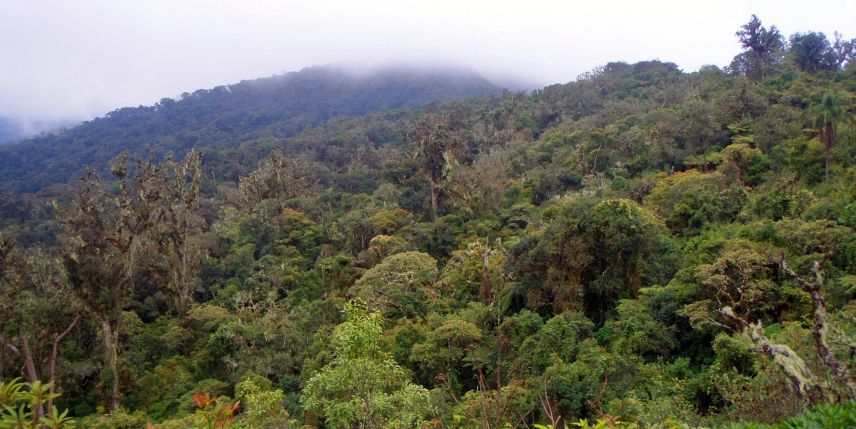 The ERSAF group from the Department of Forestry Engineering at the University of Cordoba, made up of Rafael María Navarro, Joaquín Duque, Carlos Vallejo, María Ángeles Varo and Guillermo Palacios among others, via the LifeForest CO2 project, worked with the aim of developing strategies that make carbon sequestration more efficient in forests. They used LiDAR technology to draw up a forest management map showing how different thinning intensities (regulating tree density) are determining factors that increase caarbon storage in different compartments (biomass and soil) in a forest. By means of thinning, they were able to reactivate forest growth and thereby augment carbon sequestration, since in the absence of silvicultural treatment, growth and sequestration capacity of the mass come to a standstill.
The ERSAF group from the Department of Forestry Engineering at the University of Cordoba, made up of Rafael María Navarro, Joaquín Duque, Carlos Vallejo, María Ángeles Varo and Guillermo Palacios among others, via the LifeForest CO2 project, worked with the aim of developing strategies that make carbon sequestration more efficient in forests. They used LiDAR technology to draw up a forest management map showing how different thinning intensities (regulating tree density) are determining factors that increase caarbon storage in different compartments (biomass and soil) in a forest. By means of thinning, they were able to reactivate forest growth and thereby augment carbon sequestration, since in the absence of silvicultural treatment, growth and sequestration capacity of the mass come to a standstill.
The cartography obtained from the silvicultural management allows for tailoring thinning rates, which helps forest managers when planning and programming, by means of wildland management projects, silviculture in forests in an efficient way and increase environmental services.
By means of using the LiDAR tool, the research team monitored organic carbon in the soil and the amount of total biomass (air and radical) existent on the “Los Cuadros” Hill in the region of Murcia. In order to determine how the silvicultural treatment on the hill helped to reactivate carbon capture, different thinning intensities were compared on three plots of 7200 m2: the first was the control area where no thinning treatment was carried out, the second area with a moderate thinning treatment (30%) of basal area and the third with a high rate of thinning (60%) of basal area.
The carbon analysis from the soil simples taken from each plot showed that carbon storage was greater in the plots that had undergone moderate and high thinning than the control plots. In the end, the amount of carbon in the soil, along with the total biomass, was modeled by means of LiDAR technology. By doing do, it was possible to extract a scenario in which data from carbon sequestration in soil, its relationship with tree density on each plot and the precentage of air biomass are all incorporated. After combining these data, and determining the soil-flight relationship and that greater thinning leads to greater CO2 storage capacity, the data were extrapolated to the other 36 plots on the same hill, giving rise to a thinning program in accordance with the current densities in the forest.
Not only are there benefits to increased carbon capture in a forest mass by using a silvicultural treatment such as thinning, but there are also financial advantages and they come into play within the circular economy. The material that came from thinning the hill (trunks, leaves, branches, etc) will be used as biomass in order to substitute fossil fuels, reducing pollution and increasing financial utilization of forest masses that are currently not producing. The analysis of these results has shown that, by means of a thinning program, the capacity to capture carbon has increased, which translates into an estimated value of 1,601,137.09 € on the carbon market.
Navarro-Cerrillo, R., Duque-Lazo, J., Rodríguez-Vallejo, C., Varo-Martínez, M., & Palacios-Rodríguez, G. (2018). Airborne Laser Scanning Cartography of On-Site Carbon Stocks as a Basis for the Silviculture of Pinus halepensis Plantations. Remote Sensing, 10(10), 1660. http://dx.doi.org/10.3390/rs10101660


